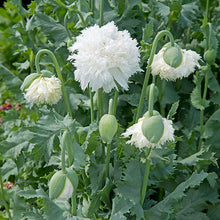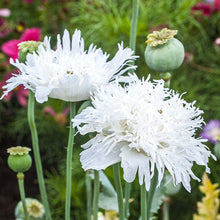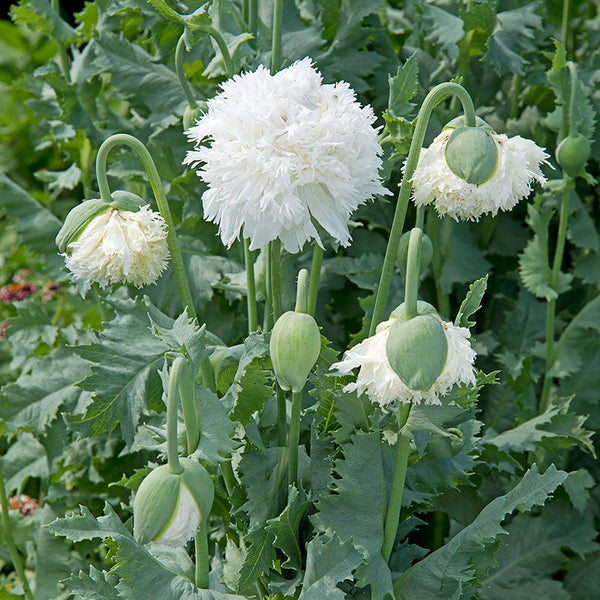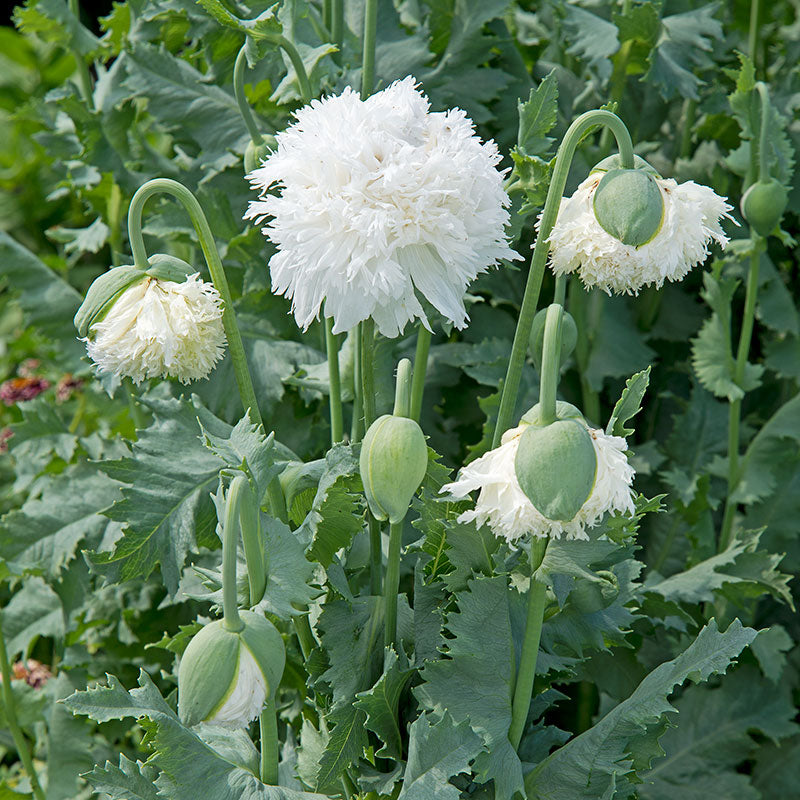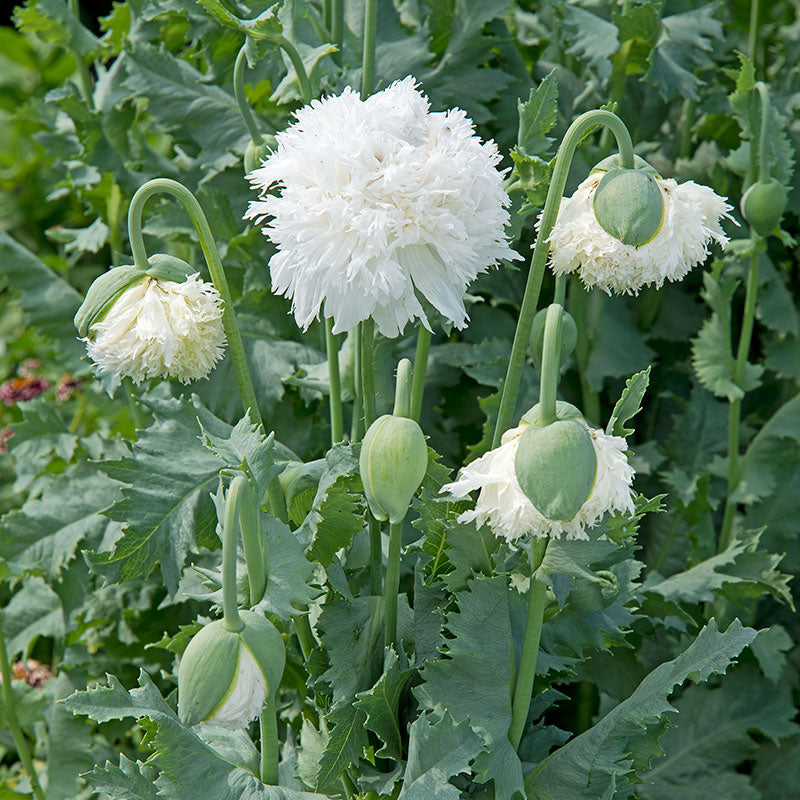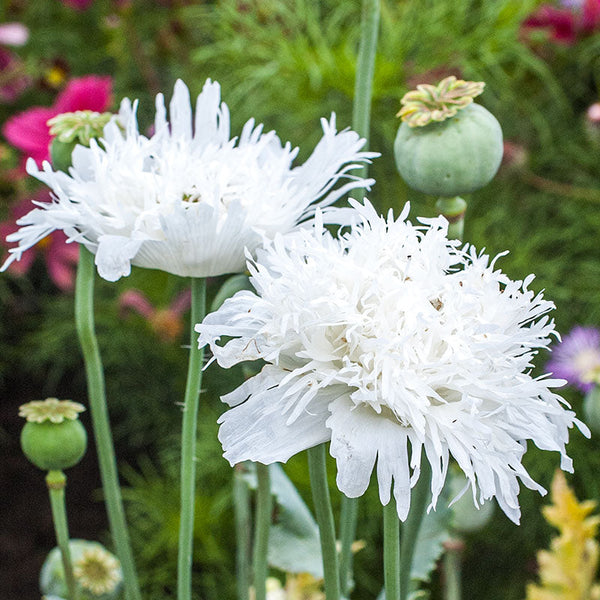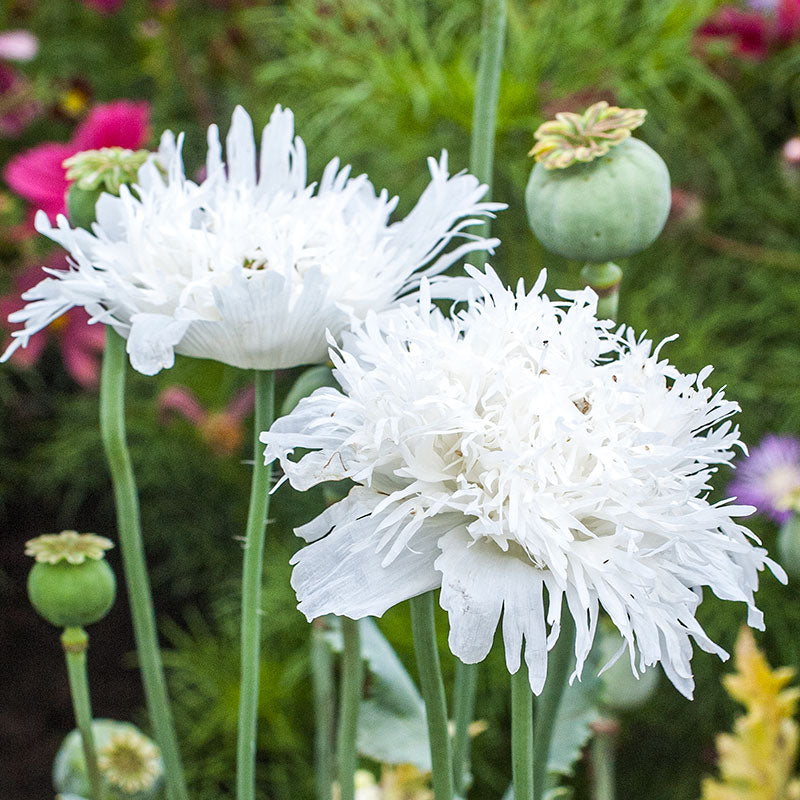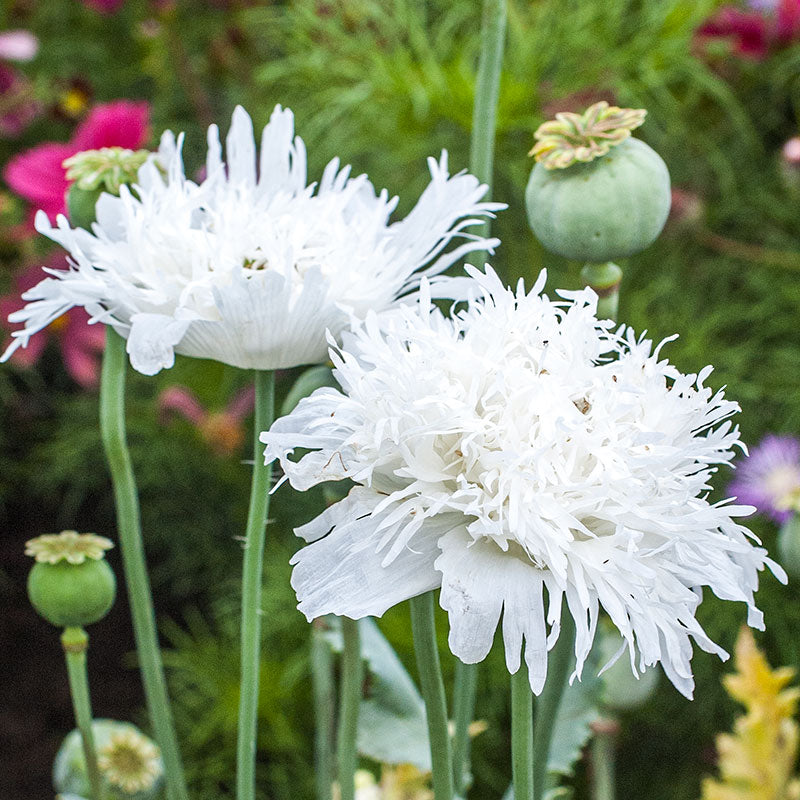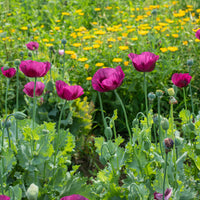SOWING INSTRUCTIONS
Depth:
Surface sow; requires light to germinate
Starting Indoors:
Sow in pots 6-8 weeks before last frost, cover lightly with vermiculite or a humidity dome and keep at 65-70°F until germination, then at 50-60°F. Be very gentle when transplanting,as poppies do not like to be disturbed.
Starting Outdoors:
Recommended. Direct sow 4 weeks before last spring frost or in late autumn (autumn only in zones 8+) Mix seed with fine sand to scatter thinly over prepared soil to avoid overcrowding.
WHEN TO SET OUTSIDE
At last spring frost date.
PLACEMENT & CULTIVATION
Double feathered poppies have bloomed in cottage gardens and ancient pleasure grounds since the 1600s. Their sea-green buds are crooked downward until lifting and bursting forth in a ball of finely cut petals. Cottage gardens and borders are natural homes for these antique flowers, grown with other early summer bloomers and often removed after flowering to make room for later summer flowers. Allow a few to self-sow if desired.
Watering Details:
These plants prefer evenly moist soil, but can tolerate drought. About an inch of water per week.
Soil pH:
Slightly acidic to neutral—if soil is acidic, add some lime before planting.
Fertilizer:
Mix in 2" inches of compost prior to planting.
Diseases & Pests:
Fungal diseases can be prevented by regularly spraying with organic fungicides and spacing at least 1' apart for good air circulation. If slugs and snails damage seedlings, sprinkle the surrounding soil with pelletized iron phosphate, crushed eggshells, or diatomaceous earth.
When to Cut for Bouquets:
Decorative dried seed pods.































